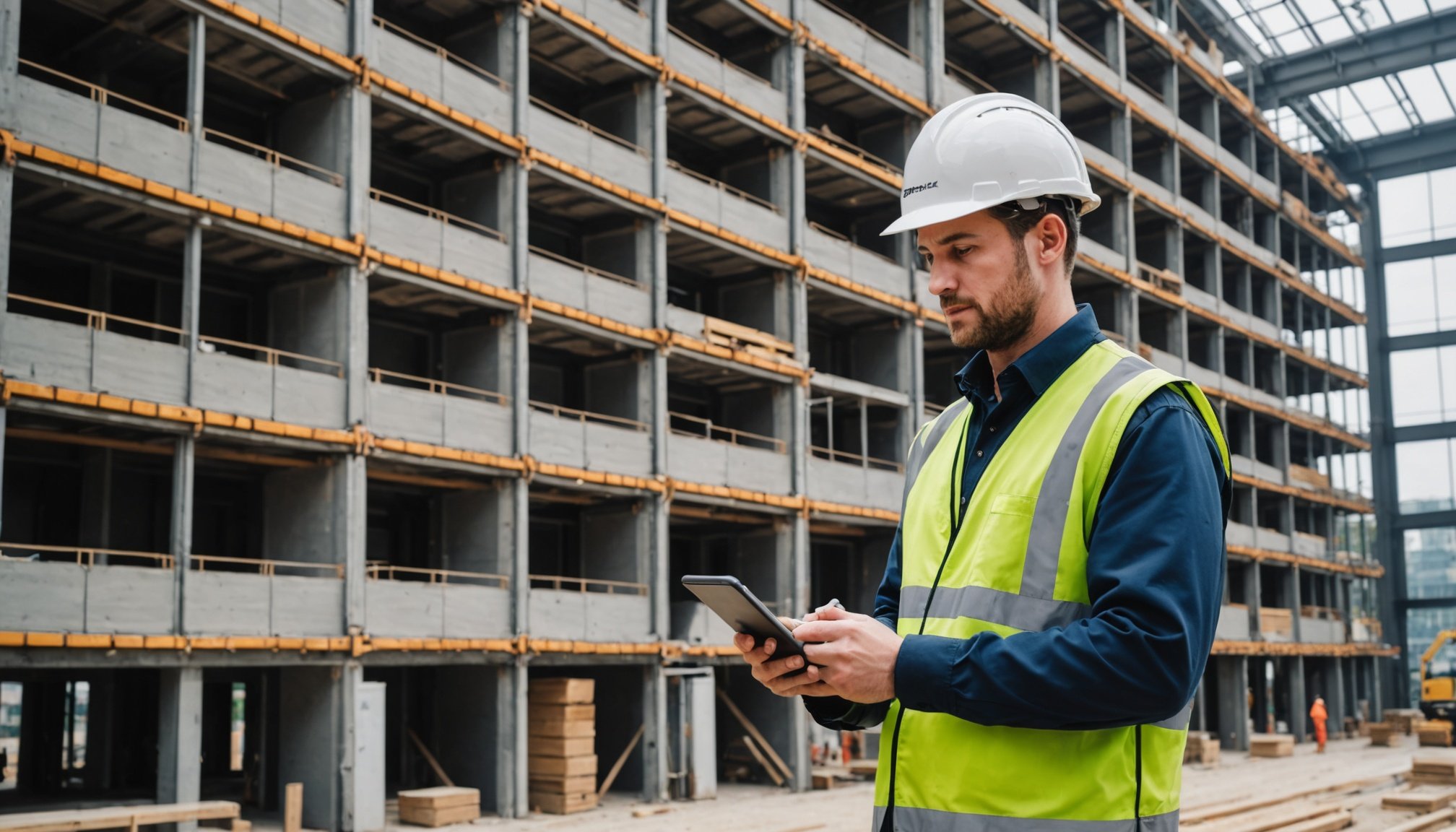Technology Integration Strategies
In today’s rapidly evolving digital landscape, effective technology integration within buildings is crucial for optimizing efficiency and sustainability. Smart building technologies have redefined how facilities operate by incorporating intelligent systems and IoT devices. This digital transformation has paved the way for enhanced energy management and improved occupant comfort.
One of the prominent smart building technologies is smart HVAC systems that utilize sensors and algorithms to adjust settings based on occupancy and weather conditions. Equally essential are advanced lighting controls which adapt to natural light availability, thus conserving energy.
Also to read : Revolutionizing uk logistics: effective approaches to seamlessly integrate autonomous vehicles
When undertaking technology integration, it’s vital to adhere to best practices. Start by conducting comprehensive needs analyses to pinpoint specific building requirements. Subsequently, implement scalable technologies that can expand with future needs. Continuous staff training is another critical component, ensuring that personnel can proficiently operate and troubleshoot integrated systems.
Several case studies have demonstrated successful technology adoption. For example, a medium-sized office building in Chicago significantly reduced its energy consumption through a combination of smart HVAC and LED lighting systems integrated via a centralised platform. Such instances illustrate the profound impact of technology integration, solidifying its importance in the modern key to a sustainable future.
Additional reading : Game-changing tactics for uk consultants to enhance client relationship management success
Sustainable Practices in Smart Building
The integration of sustainability in smart building initiatives is crucial for reducing the environmental impact and creating healthier urban spaces. Sustainable practices in smart buildings not only mitigate climate-related challenges but also foster more resource-efficient communities.
To incorporate sustainability in buildings, developers adopt various strategies. Implementing energy-efficient systems, like solar panels and LED lighting, significantly decreases resource consumption and environmental impact. Furthermore, using eco-friendly materials reduces waste and enhances the lifespan of structures. Smart water management systems, alongside rainwater harvesting and greywater recycling, also contribute to the efficient use of resources.
Sustainability in buildings extends beyond construction. Smart technologies, such as sensors and automated systems, optimize energy use by adjusting heating, cooling, and lighting based on occupancy and external conditions. These measures help in achieving significant cost savings over time, a major incentive for businesses.
The long-term benefits of sustainable buildings include enhanced occupant comfort and reduced operational costs. This leads to improved productivity and wellbeing, alongside contributing to global environmental goals. Hence, smart buildings not only serve as a model of efficiency but also a testament to the commitment towards a greener future.
Regulatory Compliance Requirements
Navigating regulatory compliance for smart buildings in the UK requires understanding multiple key regulations. The UK building regulations set out significant standards to be adhered to, focusing on safety, energy efficiency, and accessibility. For smart buildings integrating technology into these built environments, compliance extends to ensuring these systems do not compromise such standards.
Specific guidelines are in place under smart building standards. These include directives around data privacy and cybersecurity, integral to systems that rely on interconnected technologies and the Internet of Things (IoT). Meeting these standards is crucial to protecting occupants and maintaining the integrity of the building’s digital infrastructure.
Ensuring compliance begins with conducting thorough assessments of existing systems against specified regulations. Collaboration with regulatory bodies and staying updated with evolving standards is essential to maintain compliance.
Challenges faced in meeting these regulatory requirements often include keeping up with rapid technological advancements and addressing the cost implications of upgrades. Solutions typically involve implementing proactive measures: partnering with compliance specialists, investing in adaptive technologies, and instilling continuous training programs for facility managers. The goal is fostering a smart building environment that is not only compliant but also enhances operational efficiency and occupant wellbeing.
Cost Implications of Smart Building Solutions
Implementing smart technologies in buildings presents several cost considerations that construction firms must navigate. At the forefront is cost management, which involves understanding the initial investment required for integrating systems like IoT sensors, automated HVAC systems, and advanced security features. These installations often require significant upfront capital, yet their long-term benefits can outweigh initial expenses.
When considering the financial implications, it’s crucial to assess the return on investment (ROI) for these technologies. Smart buildings can result in substantial savings on energy bills, maintenance costs, and operational efficiency. For instance, smart HVAC systems can adjust temperatures based on occupancy, reducing energy waste, and contributing to a faster ROI.
Funding is a pivotal concern, and various financing options exist for construction firms venturing into smart building projects. These include traditional bank loans, government subsidies tailored for sustainable technologies, and green bonds designed to finance environmentally friendly projects.
By leveraging these options, firms can better manage upfront costs and reap the financial rewards of smart building innovations. The key is a strategic approach to investment, ensuring that the long-term savings and efficiency gains justify the initial outlay.
Workforce Training and Skill Development
In the ever-evolving construction industry, workforce training and skill development are paramount, especially with the advent of smart building technologies. As these technologies require a nuanced understanding, ensuring that staff are well-trained becomes critical.
One primary strategy for effective workforce development involves integrating continuous learning opportunities. Facilities can offer workshops and certification programs focusing on smart building technologies, blending theory with practical application. This helps bridge knowledge gaps and boosts confidence among workers.
Moreover, partnerships with educational institutions can enhance these training efforts. Collaborations can facilitate apprenticeships and hands-on experience, fostering both foundational knowledge and specialised expertise. Tailored training programs can further refine skills, addressing specific needs in the construction industry.
Case studies underline the success of well-structured training programs. For instance, companies that have invested in digital platforms for skill development have seen a significant improvement in project efficiency and innovation. These programs allow workers to adapt to technological advancements swiftly.
In conclusion, focusing on workforce training and skill enhancement not only propels the construction industry forward but also cements its future sustainability and success, unlocking new potential for growth and development.
Challenges and Opportunities in Smart Building Implementation
In the UK, the construction industry encounters significant hurdles when integrating smart building technologies. Key industry challenges include high initial costs, complex technology integration, and the need for skilled personnel. Market readiness is also a concern, as many firms are not fully prepared to implement such advanced systems. Navigating these complexities requires strategic planning and investment in workforce training, which can help firms overcome initial barriers.
Despite these obstacles, smart building opportunities present a compelling case for innovation. The potential for increased energy efficiency, enhanced security, and improved occupant experience can drive the market readiness forward, attracting investment and fostering growth. Experts suggest that collaboration between tech companies and construction firms can further accelerate this trend, offering solutions to enhance industry challenges while capitalising on opportunities.
To effectively leverage these opportunities, it’s essential for firms to stay informed on developing technologies and market trends. By proactively addressing potential roadblocks and building partnerships with tech innovators, construction firms can enhance their market readiness. Ultimately, this approach can position them at the forefront of smart building adoption, leading to a more sustainable and efficient future for the industry.











